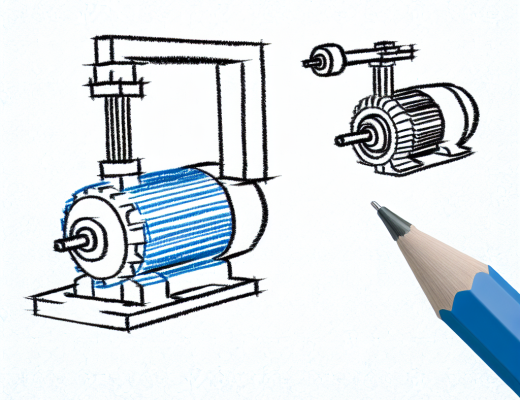Just as plants convert sunlight into energy through photosynthesis, solar panels harness this abundant resource to generate electricity. In this post, you will explore the intricate physical processes that take place within solar panels, revealing how photons from sunlight interact with semiconductor materials to create electrical currents. By understanding these fundamental processes, you can gain insight into how solar energy systems work and their potential impact on your energy consumption and sustainability goals.
The Basics of Solar Energy
Before you probe into the mechanics of solar panels, it’s necessary to grasp the fundamental concept of solar energy. This renewable energy source harnesses sunlight, converting it into usable electricity through various technological processes. Understanding these basics will help you appreciate the significance of solar power in combatting climate change and reducing energy costs.
Understanding Photovoltaic Effect
Below you will learn about the photovoltaic effect, a key principle behind solar energy conversion. It refers to the process where certain materials generate electric current when exposed to sunlight. This phenomenon is fundamental to how solar panels function, supplying clean, green electricity for your needs.
Types of Solar Panels
At the forefront of solar technology are three primary types of solar panels, which include Monocrystalline, Polycrystalline, and Thin-Film panels. Each type has distinct characteristics suited to different applications and energy needs.
| Type of Panel | Characteristics |
| Monocrystalline | High efficiency, space-efficient, longer lifespan |
| Polycrystalline | More affordable, slightly lower efficiency, larger space required |
| Thin-Film | Flexible, lightweight, less space-efficient but good for larger areas |
| Building-Integrated Photovoltaics | Integrated into building materials, aesthetic appeal |
| Concentrated Photovoltaics | Utilizes mirrors/lenses, requires direct sunlight |
But as you explore each type of solar panel, consider their unique advantages and disadvantages to determine what suits best for your situation. This knowledge is vital for maximizing your investment in solar technology.
- Monocrystalline: Highly efficient, but costlier per watt
- Polycrystalline: Good balance of cost and efficiency
- Thin-Film: Affordable for specific applications, but less efficient
- Building-Integrated: Enhances aesthetic, less invasive
- Concentrated: Best for high sunlight areas, specialized installation
Perceiving the nuances between panel types can empower you to make informed decisions that align with your energy goals and budget.
The Physical Components of Solar Panels
You might be surprised to learn that solar panels are made up of several critical components that work together to convert sunlight into electricity. Understanding these parts will help you appreciate how your solar energy system functions efficiently. From solar cells that absorb photons to conductors that transmit electricity, each element plays a vital role in the overall process.
Solar Cells
The heart of any solar panel is the solar cell, typically made from silicon. These cells convert sunlight into electrical energy through the photovoltaic effect, allowing your home to harness natural energy. Each solar cell generates direct current (DC) electricity when sunlight hits, setting the stage for the entire solar power system.
Conductors and Inverters
On the other hand, conductors and inverters are important for transporting and converting the electricity generated by solar cells. Conductors, often made of copper or aluminum, carry the current from the solar cells to the inverter, which serves as an interface between your solar panel system and the electrical grid. Inverters convert the direct current (DC) generated by solar cells into alternating current (AC), which is the form of electricity used in your home and for most electrical appliances.
It’s important to note that the efficiency of your solar power system depends significantly on the quality of these conductors and inverters. High-quality conductors minimize energy loss during transport, ensuring that more of the electricity generated reaches your home. Additionally, modern inverters often come with advanced features, such as grid synchronization and real-time monitoring, enhancing the overall performance of your solar energy setup.
The Conversion Process
Some of the most fascinating physical processes occur within solar panels, enabling them to convert sunlight into usable electricity. This conversion involves several key stages, each contributing to the overall efficiency of the system. Understanding these stages can help you appreciate how solar technology harnesses the sun’s abundant energy effectively.
Absorption of Sunlight
Against the backdrop of the solar panel’s surface, photons from sunlight strike the panel’s materials, primarily silicon. This interaction is crucial, as it allows the photons to be absorbed, creating an initial energy state necessary for the subsequent conversion to electricity.
Electron Excitation and Flow
Along with the absorption process, the energy from the absorbed photons excites electrons in the silicon material. This excitement causes the electrons to jump from their stable positions, creating holes in the atomic structure. The movement of these free electrons generates an electric current, which can then be harnessed for power.
And as these excited electrons flow through the panel, they travel towards the conductive metal contacts, creating a direct flow of electricity. This movement generates a voltage difference, which is crucial for driving electric current through connected circuits. By understanding this process, you can better appreciate how your solar panel system efficiently transforms sunlight into power for your home or business.
Efficiency Factors
All solar panels operate under specific efficiency factors that determine how effectively they convert sunlight into electricity. These factors include:
- Type of solar panel
- Quality of materials
- Environmental conditions
- Installation quality
- Maintenance practices
After considering these factors, you can optimize solar panel performance for your specific needs.
Temperature Effects
On sunny days, high temperatures can negatively impact the efficiency of solar panels. The table below illustrates the correlation between temperature and performance:
| Temperature (°C) | Efficiency (%) |
|---|---|
| 25 | 100 |
| 35 | 95 |
| 45 | 90 |
Angle of Insolation
Any adjustment in the angle of your solar panels can significantly influence their ability to capture sunlight. The angle, or tilt, of your panels determines the amount of direct sunlight received throughout the day.
This means that you should orient your solar panels according to the sun’s path across the sky to maximize energy absorption. By adjusting the angle seasonally or using tracking systems, you can greatly enhance their efficiency and overall performance. Identifying the optimal angle for your location will lead to a more beneficial solar energy production experience.
Advances in Solar Technology
Once again, the solar industry is experiencing rapid advancements, which are leading to more efficient and cost-effective options for harnessing solar energy. From innovative materials to groundbreaking designs, these technological improvements enable you to maximize your investment in solar power, ensuring higher energy output and greater sustainability while addressing global energy needs.
Bifacial Panels
By utilizing both sides of the panel to capture sunlight, bifacial panels significantly increase energy production compared to traditional solar panels. These panels can harness reflected light from surrounding surfaces, making them an excellent choice for locations with high albedo, such as snowy or sandy areas, allowing you to generate more electricity throughout the day.
Perovskite Solar Cells
Solar technology has embraced perovskite solar cells as a potential game-changer due to their high efficiency and lower production costs. These cells have the ability to absorb a broader spectrum of sunlight, which allows you to capture and convert more energy compared to traditional silicon cells.
Plus, perovskite solar cells are easier to manufacture and can even be incorporated into flexible surfaces, which provides you with diverse applications for solar energy. Their rapid development period and potential for scalability make them a promising contender for the future of solar technology, potentially transforming the way you utilize renewable energy in your daily life.
Environmental Impact
Your choice to adopt solar energy not only reduces electricity bills but also contributes to a cleaner environment. By harnessing the power of the sun, solar panels help decrease reliance on fossil fuels, leading to lower greenhouse gas emissions and a smaller carbon footprint. Furthermore, as installations proliferate, the overall impact on climate change and air quality becomes increasingly positive, fostering a healthier planet for future generations.
Renewable Energy Benefits
Energy generated from solar power provides a sustainable and renewable alternative to traditional energy sources. As it draws from the sun’s abundant energy, solar systems help mitigate issues related to resource depletion, ensuring that your energy consumption aligns with environmental goals. Additionally, solar technology has the potential to stimulate economic growth through job creation in installation, maintenance, and manufacturing sectors.
Material Sustainability
Impact of solar panel production extends beyond energy output; material sustainability plays an important role in minimizing environmental harm. The choice of materials and their recyclability or biodegradability can significantly influence the lifecycle impact of solar technologies. By focusing on sustainably sourced materials, manufacturers can reduce waste and conserve resources, which in turn benefits both the economy and the ecosystem.
Sustainability in solar panel manufacturing involves using materials that can be efficiently recycled or reused at the end of their lifecycle. Innovations in technology and material science are leading to the development of more sustainable options, such as thinner solar cells, reduced metal usage, and alternative compositions. By prioritizing environmentally-friendly production practices, the solar industry is making strides towards minimizing its ecological footprint, allowing you to harness solar energy with a conscience. This commitment ensures the long-term viability of solar power while safeguarding the planet’s resources for future generations.
Final Words
Presently, you’ve explored the fascinating journey of sunlight transforming into electricity through solar panels. By understanding the intricate processes of photovoltaic cells and energy conversion, you can appreciate how solar energy harnesses nature’s power to provide a sustainable energy source. As you consider solar technology’s benefits for your energy needs, you empower yourself with knowledge that aligns with a greener future. Embracing this technology not only enhances your energy independence but also contributes positively to the environment.




